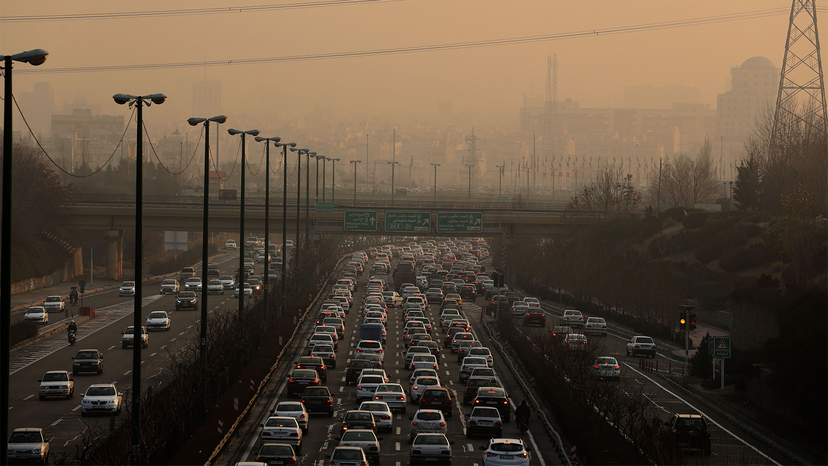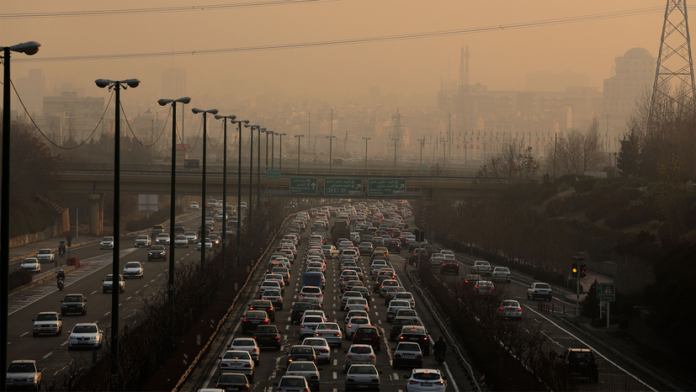\”

Every time you go for a drive, pollution is emitted directly into the air which causes significant risks for your health, especially for people who live near busy roads, and for the environment. You see it every time that smoke billows from your car\’s exhaust pipe, and from all the different forms of transportation we rely on to get around and to move goods around the planet — vehicles are a major contributor to air pollution.
Air pollution refers to the presence of foreign substances in the air that don\’t belong there, or excessive amounts of certain impurities that wouldn\’t harm us otherwise. When cars burn gasoline, they emit pollutants. Gasoline fumes escape into the air even when we pump gasoline into our fuel tanks.
Three Major Pollutants From Cars
There are three major pollutants that come from cars:
- Particulate matter — a mixture of solid particles and liquid droplets found in the air that contribute to atmospheric haze and can damage your lungs and get into your bloodstream.
- Carbon monoxide (CO) — cars emit carbon monoxide when fuel is burned. Breathing air with a high concentration of CO affects critical organs like your heart and brain. According to the Environmental Protection Agency, as much as 95 percent of all CO emissions in cities may come from motor vehicle exhaust.
- Nitrogen dioxide (NO2) — when fuel burns, nitrogen and oxygen react with each other and form nitrogen oxides (NOx). Nitrogen Dioxide (NO2) forms from emissions from cars, trucks, buses, power plants and off-road equipment. Breathing air with a high concentration of NO2 can affect the respiratory system.
When hydrocarbons and NOx combine in sunlight, they produce ozone. High in the atmosphere, a layer of ozone protects us from the sun\’s ultraviolet rays. When holes in the atmosphere\’s ozone layer allow ozone to come closer to Earth, it contributes to smog and causes respiratory problems.
Air pollutants emitted from cars are believed to cause cancer and contribute to such problems as asthma, heart disease, birth defects and eye irritation.
Greenhouse Gases
Emissions from cars increase the levels of carbon dioxide and other greenhouse gases in the atmosphere. At normal levels, greenhouse gases keep some of the sun\’s heat in the atmosphere and help warm Earth. That said, many scientists believe that burning fossil fuels such as gasoline causes greenhouse gas levels to spike, leading to global warming.
Scientists use sophisticated instruments to measure concentrations of harmful substances in the air, but it\’s tough to say exactly what percentage of air pollution comes from cars. This makes sense, because many other human activities contribute to air pollution as well. In fact, the production of electricity by coal-fired power plants and other sources can cause more pollution than most cars. If that wasn\’t enough, we pollute the air when we heat our homes and public buildings with fuels other than electricity — just as we do when we drive our cars. Even people who don\’t drive add to pollution when they buy goods and services that involve fuel when they\’re made or delivered.
What we do know is that the transportation sector is responsible for over 55 percent of NOx total emissions inventory in the U.S., less than 10 percent of VOCs emissions in the U.S. and less than 10 percent of particulate matter emissions in the U.S. Volatile organic compounds, or VOCs, are gases that are emitted into the air from products or processes, according to the American Lung Asociation, and come from deisel emissions and the burning of gasoline.
Although the U.S. Environmental Protection Agency (EPA) declared cars "mobile sources" of pollution, they aren\’t the only culprits. Big trucks, bulldozers, ships and boats, trains and even snowblowers pollute the air.
The Inventory of U.S. Greenhouse Gas Emissions and Sinks estimated that mobile sources constituted 32 percent of total anthropogenic greenhouse gas (GHG) emissions in the United States in 2019 when including emissions from non-transportation mobile sources. And according to a study by researchers at the University of Toronto, published in 2015, 25 percent of cars and trucks are causing about 90 percent of pollution from the vehicle fleet.
The United States was long considered the world\’s biggest polluter in terms of carbon dioxide and other greenhouses gases, but China has moved into the top spot, according to the Global Carbon Project 2020.
The percentage of air pollution caused by cars is higher in urban areas and higher still near major highways. Fortunately, better fuels and new technologies in cars help. The U.S. government has imposed tougher emissions standards, and consumers want better efficiency. According to the EPA, today\’s cars are 98 to 99 percent cleaner for most tailpipe pollutants compared to the 1960s. Hybrid cars, electric cars and alternative fuels will continue to help, but the sheer number of people — and cars — on the roads offsets these improvements.
People can help by driving less. Combine trips for efficiency. Walk, bike, carpool or use public transportation when you can.
According to the U.S. Department of Energy, "[h]ighway vehicles release about 1.7 billion tons (1.5 billion metric tons) of greenhouse gases (GHGs) into the atmosphere each year — mostly in the form of carbon dioxide (CO2) — contributing to global climate change. Each gallon of gasoline you burn creates 20 pounds (9 kilograms) of GHG. That\’s roughly 6 to 9 tons (5 to 8 metric tons) of GHG each year for a typical vehicle."
Originally Published: Aug 29, 2012
Car Pollution FAQ
How does car pollution affect human health?
The pollutants that cars emit can cause several health complications, including cancer, asthma, eye irritation, poisoning, heart disease and birth defects.
What percentage of air pollution is caused by vehicles?
The Environmental Protection Agency estimates that vehicles cause nearly 75 percent of the carbon monoxide pollution in the United States. The Environmental Defense Fund estimates that transportation causes nearly 27 percent of greenhouse emissions.
How does car pollution affect the environment?
Vehicle pollution contributes to global warming as greenhouse gases heat the planet and deplete the ozone layer. This is causing the average global temperatures to rise, leading to rising sea levels, an increase in natural disasters and other domino effect events.












